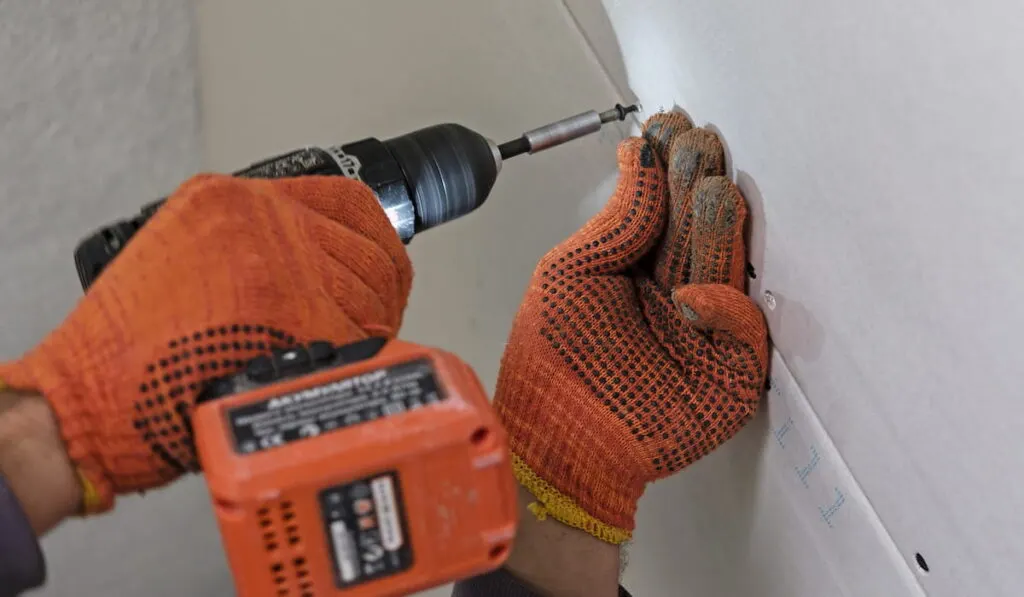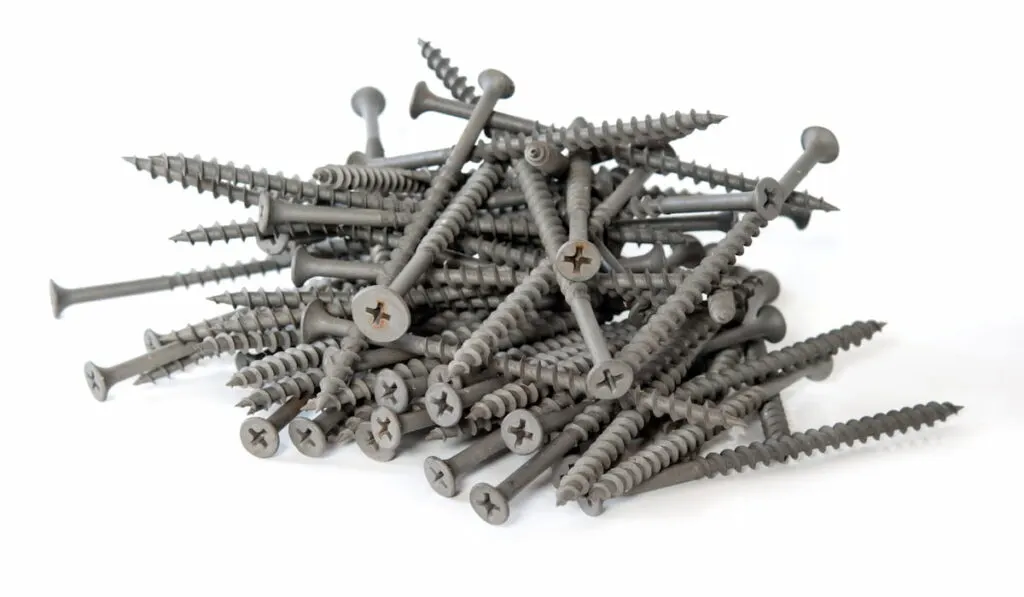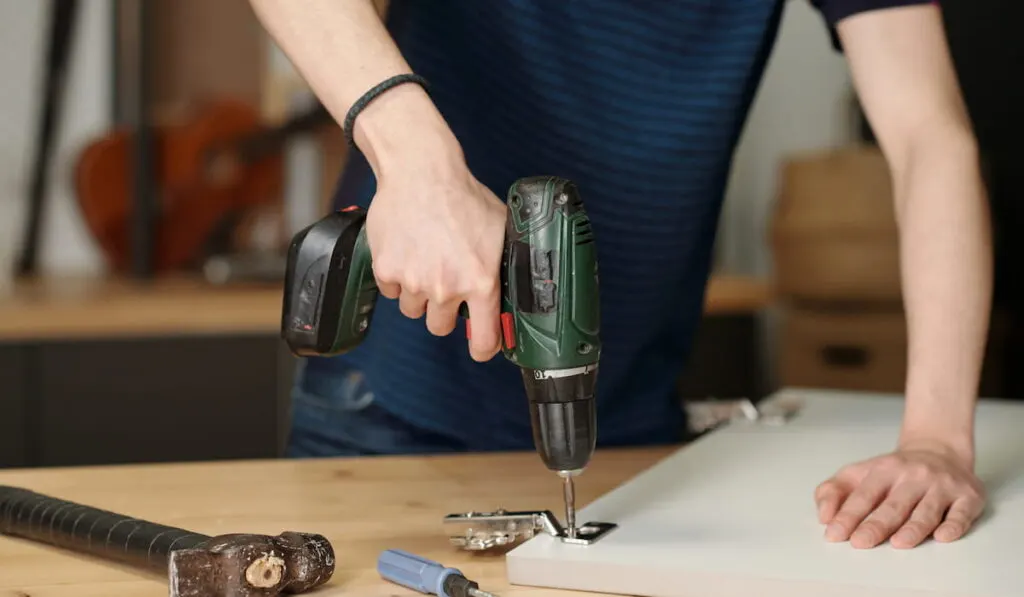*This post may have affiliate links, which means I may receive commissions if you choose to purchase through links I provide (at no extra cost to you). As an Amazon Associate, I earn from qualifying purchases. Please read my disclaimer for additional details.
Drywall screws are a dime a dozen and if you visit any of your local hardware stores, that will be readily apparent. With so much in terms of inventory, it’s probably pretty tempting to consider drywall screws for woodworking, especially considering how cheap they are compared to their wood screw cousins.
You can use drywall screws for woodworking projects so long as what you’re doing isn’t going to place a load of stress on the drywall screws. They’re notoriously brittle, despite their sharp points and the fact that they are designed to go through metal as well as drywall.

Most generic opinions that you get on drywall screws are usually from those who have watched a few YouTube videos and assume that the old-timers are right and using a drywall screw to lock down a piece of wooden crown mold is going to snap the screw in half and probably blow up your drill while you’re at it.
Table of Contents
Why Drywall Screws May Work in Woodworking?
Some of the points about drywall screws are correct and some of the things that make them good drywall screws can potentially make them bad for wood. It all depends on how you plan on using them.
- Drywall screws usually have a flat head, which is oftentimes very helpful
- Extremely sharp tips
- Designed to screw into metal
- They’re very brittle
- They will break before they bend
- Great for softwood but not for hardwoods
Drywall Screws with Hardwood
The problem that you have with drywall screws (and the reason that they probably get such a bad reputation with wood) is that they don’t take to kindly to a lot of torque or sideways pressure. As above-mentioned, drywall screws are very hard metal and it doesn’t take much to snap one.
In fact, screwing them into something like walnut, maple, hickory, or oak is likely to result in snapping the head clean off when the head approaches the wood.
The threads will generally be fine, but the deeper the screw goes, the more torque that’s applied to continue spinning the screw down and into the wood.
When it comes to drywall screws, they just can’t handle that level of torque and the head will snap off when it gets close to flush with the wood.
Drywall Screws Have Sharp Tips

Drywall screws are designed to quickly screw the drywall into metal studs. That’s right, not wooden studs but metal studs. The tips are designed with a high level of sharpness and strength so that they could quickly penetrate the metal without the need to create a pilot hole first.
Of course, that sounds like something that is perfect for drilling down wood but that’s not always the case, especially if it’s a hardwood, used for something heavy-duty, and you really have to work the screw in at the end.
It’s the hardness of the drywall screw that ends up being its undoing, however, that doesn’t mean it has no place in woodworking.
Drywall Screws Will Break Before They Bend
We’ve discussed all of the reasons behind drywall screw breaking, especially when you are using them as screws for hardwood applications. The thicker the wood, the worse it’s going to be.
Since they’re brittle screws, they’ll break if there is any sideways pressure on them as well. The screw doesn’t have to be sticking too far out of the wood either. If you try to adjust the screw over, it’s liable to snap on you.
Drywall Screws for Soft Wood
When it comes to hardwoods, the best screws are usually those that are fine-threaded, while drywall screws are not. You’ll most commonly see drywall screws used to attach sheetrock to either metal or underlying wood.
Drywall screws will also work with plywood and other softwood that isn’t going to be used in a heavy-duty application, such as framing for a house.
You certainly wouldn’t want to use drywall screws for attaching joists to beams or something like that, or you would be begging for a huge disappointment over time.
Granted, drywall screws are more likely to break than bend, however, you would be surprised how it often takes less force to snap a drywall screw than it takes to bend or otherwise warp a wood screw.

Why Are Drywall Screws So Much More Popular?
The easy answer is to say that they’re more popular than wood screws because they are cheaper. However, that’s not always the case. In fact, it’s not even the case most of the time. Drywall screws are everywhere and they dominate the shelves at any given hardware store.
Oftentimes, we also overlook the fact that most people aren’t carpenters and that a screw, at the end of the day, is just a screw in most people’s eyes. So, when you have an easily accessible, cheap screw that makes up most of the shelf space, it makes for a popular screw.
Drawbacks of Drywall Screws
There are a few things that you need to look out for if you are using drywall screws. Most importantly, if you are going to use drywall screws in wood, you should only use them in limited applications, such as screwing a non-wood material into softwood.
Because of the way that drywall screws are threaded, they can force two pieces of wood apart, which is why you shouldn’t use them to screw pieces of wood together.
The reason that a drywall screw will sometimes separate two pieces of wood is that the threading in this type of screw is so long. It runs all the way to the head of the screw in most cases and that is often too much when you are putting two pieces of wood together.
If you are adamant about using drywall screws to put together two pieces of wood, use a c-clamp or something else to lock the two pieces together before you start drilling in your screw.
There is also the fact that the average drywall screw lacks the appropriate threading to hold together two pieces of wood. However, there is more than one type of drywall screw.
You can also purchase “coarse” threaded drywall screws that are much better at securing the wood in place without the threading losing its grip on the wood.

Should You Use Drywall Screws for Woodworking Projects?
Knowing what we know now, it stands to reason that there are some instances where using drywall screws would be just fine. In most woodworking projects out in the shop, wood is clamped together with an awful lot anyway, so that’s not an eliminating factor.
We also know not to use them for anything that is structural and heavy-duty, due to stresses over time. But they are perfectly reasonable for mounting hardware to wooden structures, so long as it’s not hardwood, where it might be a bit more of a struggle.
All Things Considered
You can definitely use drywall screws for woodworking projects, however, it’s important to know when it’s appropriate and when it is not. It’s also important to know the limitations of the screw, so you can do the proper prep work beforehand.
Ultimately, drywall screws will generally do the job, but for hardcore projects and structural designs, such as a framework for a home, go with wood screws and save the drywall screws for lightwork projects.
Resources
Kovalick, B. (July 7, 2014). Using Drywall Screws for Woodworking
Retrieved from: https://woodbin.com/doc/drywall-screws-for-woodworking/
Drywall screws vs. other types of wood screws
Retrieved from: https://woodgears.ca/joint_strength/drywall_screws.html
